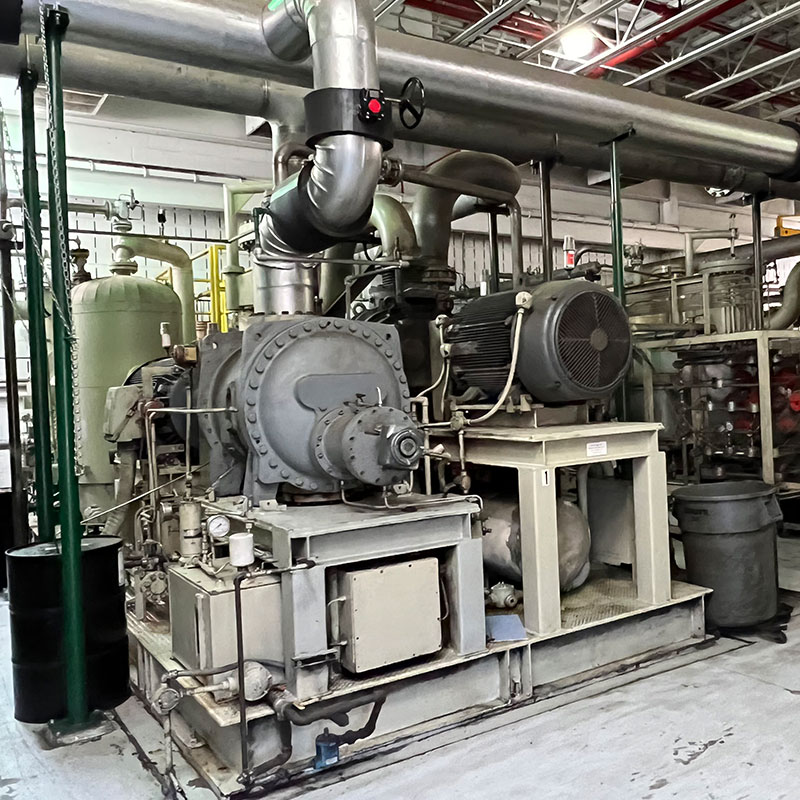Energy Center
By generating energy from waste at the Green Knight Energy Center, our state-of-the-art gas-to-energy facility, generates enough green electricity to supply 8000 households.
Did you know that the trash you discard today might help run your refrigerator tomorrow?
It’s true – thanks to the Green Knight Economic Development Corporation (GKEDC) gas-to-energy facility. The plant uses landfill gas instead of fossil fuels to generate electricity. Here’s a simple look at how it works.
Homes and businesses in our local communities generate tons of waste material and bundle it for pick-up. Waste Management’s fleet of trucks and laborers collects the curbside trash.
Trucks haul the trash to Grand Central Sanitary Landfill in Plainfield Township for processing. As the waste material decays, it naturally generates methane gas. A complex collection system gathers this flammable gas and safely transports it to the energy-generating plant.
At the plant, the methane gas is burned as fuel within turbine-driven generators that generate electric power, the equivalent of enough electricity to supply 8000 households.
This electricity is sold as “green,” or renewable, power to Exelon, and the profits are used to support community activities such as scholarships, community grants, and the promotion of economic development projects. Even when the landfill closes, methane gas will still be captured and burned for many years.
The facility opened in March 2001. Waste Management is currently contracted to operate and maintain the facility under the guidance of the GKEDC Board of Directors.

How it Works

Landfill Gas Generation
Landfill gas forms when organic matter and moisture are trapped underground. Because the landfill is maintained under a vacuum, some air is drawn into the "bed," but ideally, the amount is minimal and the process for the most part takes place in the absence of oxygen or anaerobically. Anaerobic organisms digest the organic matter and give off a bio-gas that, when drawn out of the landfill, contains a mixture of approximately 50% methane, 40% carbon dioxide, 9% nitrogen and 1% oxygen that is saturated with water vapor. The mixture includes trace amounts of gas made up of compounds of sulfur and nitrogen which give it a strong odor.

Green Knight Energy Center
Prior to the establishment of the Green Knight Energy Center, landfill gas was extracted from the landfill by exhauster blowers and delivered to large flares that burned the methane to eliminate any fire or explosion hazard. Flaring the gas also destructs the odorous trace gases. At the Green Knight Energy Center, landfill gas now is diverted away from flares, and goes through multiple stages of filtering, compression, cooling and drying before reaching the three turbine engines for use as fuel. Each turbine engine drives its own electric generator, which produces electricity at 4,160 volts. A high-voltage transformer raises the voltage to 34,500 volts to match that in the wires of the local delivery company (Metropolitan Edison) for transmission to the main distribution grid.

Power to Distribution Grid
The Green Knight Energy Center is capable of generating approximately 10 megawatts of 4,180 volt electric power. It uses approximately 19% of that to drive the landfill gas compressors and operate the station. Electricity going to market must first be transformed to 34,500 volts to match the voltage on the lines of the local electric utility company that transmits it to the North Bangor substation. At the substation, the voltage is increased to 110,000 volts for transmission on the PJM (Pennsylvania-New Jersey-Maryland) grid. From the grid, the electricity goes to a power purchaser (Exelon) for sale as "green" (or renewable) power.
Tour the Green Knight Energy Center

Compressor Room
This is a photo of the compressor room. Landfill gas is pulled in from the landfill at about 1 to 1 1/2 psi vacuum and compressed in two stages to 170 psi for delivery to the turbines.

Turbine Engine
This is a photo of one of the turbine engines. It is a Solar Centaur T-4500 gas turbine engine that drives a 3300-kilowatt generator.

Turbine Control Panel
This photo shows the computerized control panel for the three turbine generators.

Turbine Room
This photo shows two of the three turbine-generator units after completion of construction. Noteworthy is the ample spacing provided between the units to accommodate future heat recovery equipment.
